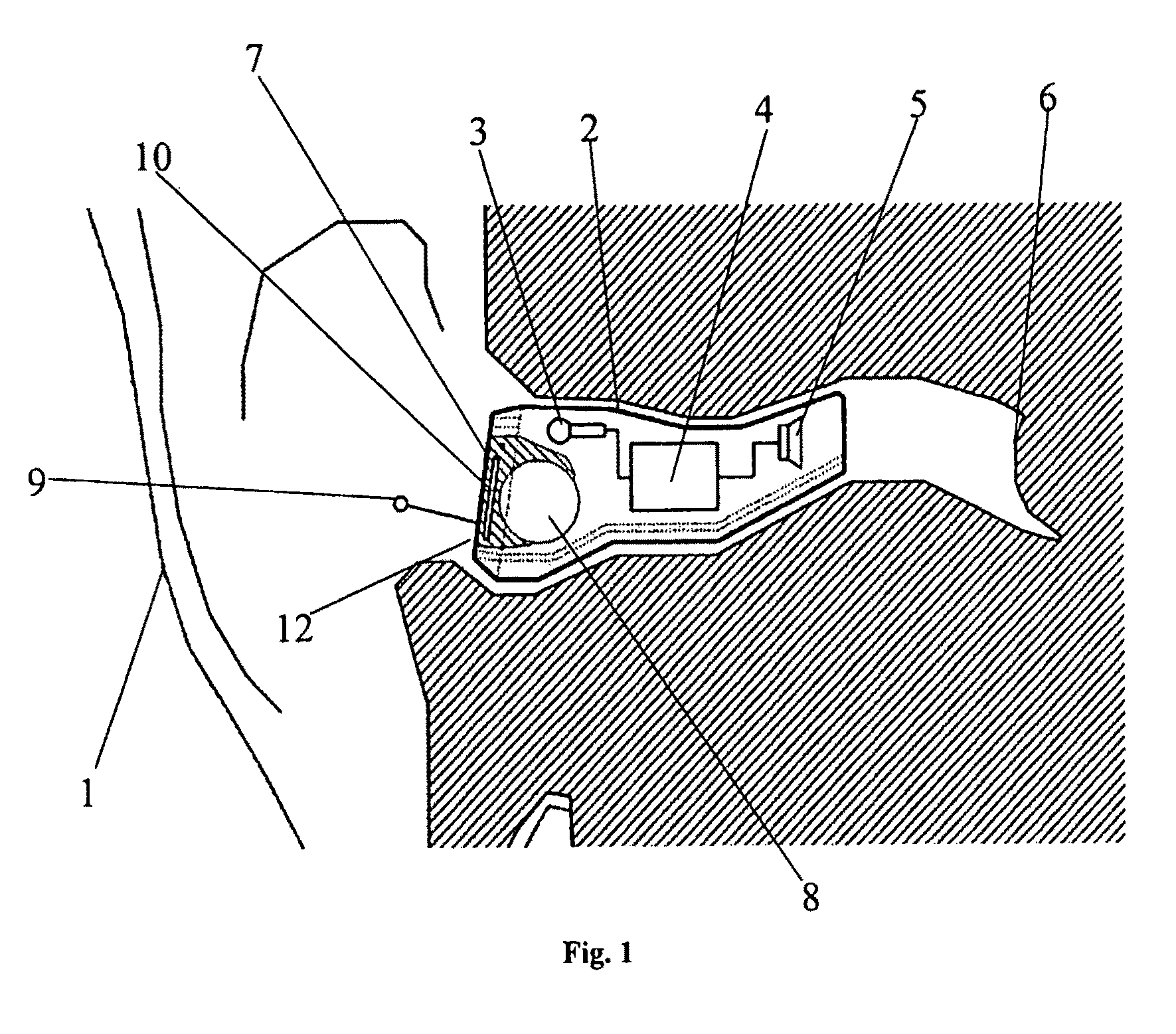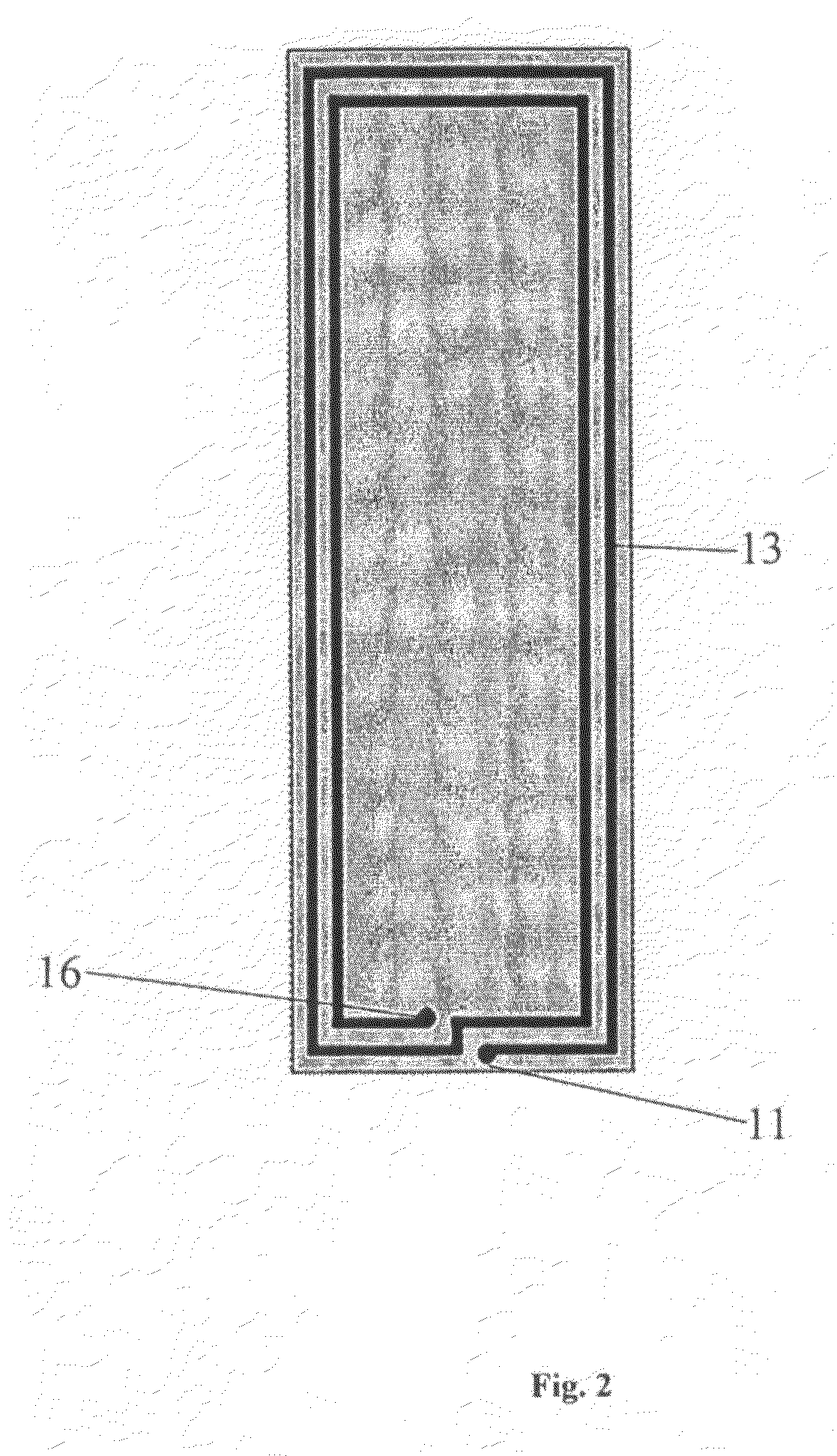Hearing aid with antenna for reception and transmission of electromagnetic signals
a technology for electromagnetic signals and antennas, applied in the direction of antennas, antenna supports/mountings, electric vehicles, etc., can solve the problems of affecting the reception and transmission of electromagnetic signals in these frequency bands, and achieve the effect of reducing the space occupied by antennas
- Summary
- Abstract
- Description
- Claims
- Application Information
AI Technical Summary
Benefits of technology
Problems solved by technology
Method used
Image
Examples
Embodiment Construction
[0021]Initially it is worth noting that we are dealing with small antennas, meaning that the wavelength is much larger than the physical size of the antenna and therefore the antenna has a narrow bandwidth (high quality factors) and low efficiency (small radiation resistance compared to the loss resistance). If high currents are dominating, the structure will mainly radiate the magnetic field and vice versa: if high voltages are present, a dominating electric field must be expected.
[0022]In FIG. 1 a schematic sectional representation of a CIC hearing aid is shown with an antenna according to the invention. The hearing aid comprises a custom made shell part 2 which is placed deep in the ear canal. Instead of being custom made the shell part can be either flexible or have a flexible outer portion which allows it to be inserted into the ear. 1 is an outline of the external ear of a person. The shell part 2 encloses a receiver 5, a signal processing unit 4 and a microphone 3. The receiv...
PUM
 Login to View More
Login to View More Abstract
Description
Claims
Application Information
 Login to View More
Login to View More - R&D
- Intellectual Property
- Life Sciences
- Materials
- Tech Scout
- Unparalleled Data Quality
- Higher Quality Content
- 60% Fewer Hallucinations
Browse by: Latest US Patents, China's latest patents, Technical Efficacy Thesaurus, Application Domain, Technology Topic, Popular Technical Reports.
© 2025 PatSnap. All rights reserved.Legal|Privacy policy|Modern Slavery Act Transparency Statement|Sitemap|About US| Contact US: help@patsnap.com



